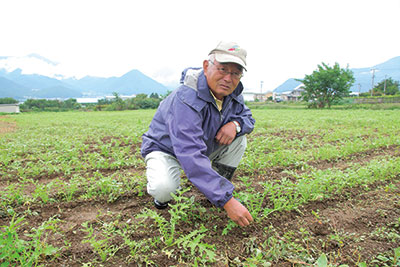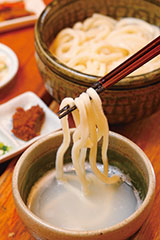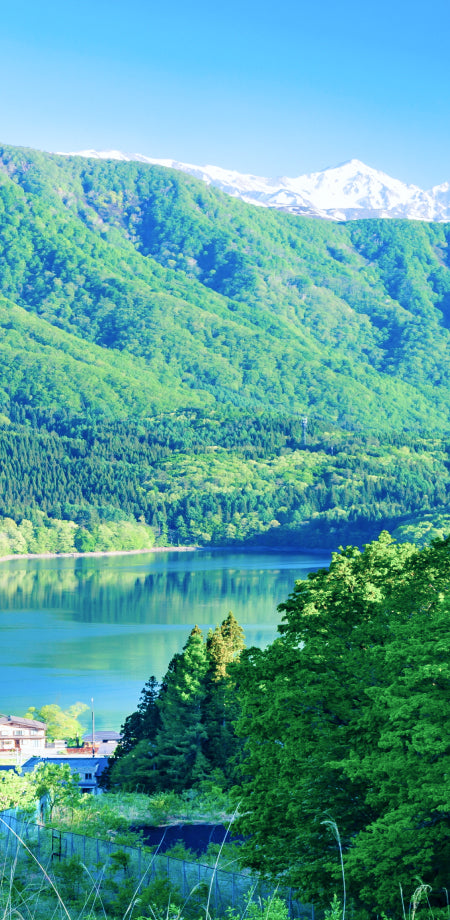投稿日:
更新日:
Treasures created by the local climate ShinshuEnjoy the deliciousness of traditional vegetables

The adorable appearance and unique flavor that only comes from this place Sakaki's specialty, Mouse Daikon, where you can enjoy "amomkura"
Traditional vegetables grown in an indigenous climate. The taste, aroma and shape that are different from ordinary vegetables have been rooted in local food culture since ancient times and are still passed down to today. To protect the treasures of this region and to make many people aware of it, Nagano In 2007, the prefecture has announced thatShinshuWe have established the "Traditional Vegetable Certification System" and currently 75 varieties have been selected. It's the season for root vegetables to become tasty. Packed with the love of local people,ShinshuEnjoy the deliciousness of the food.

Sakaki Town is known as one of the most industrial towns in the prefecture, with many companies and factories accumulated. On the other hand, there are many farmlands with little precipitation and pebbles mixed in, and good drainage, making it a land that is not very suitable for growing ordinary vegetables. However, the environment creates vegetables that can only be grown here. This is what spicy radish is called "mouse radish."

"If you make it elsewhere, it's strangely not too spicy or it doesn't turn into a mouse shape," says Ono. The taste, which spreads a faint sweetness after spiciness, is described as "amomokura," and only Sakaki's mouse radish can produce this flavor.

And the specialty dish made with this radish is "Toshibori Udon." This is a luxurious local dish, where radish is grated and only squeezed juice is used as a soup, and most people are surprised at how spicy it is. The recommended style is to add miso or green onions to make the flavor mellow and enjoy Kamaage Udon. Once you eat it, it's addictive and delicious.

Ono Koichi, Vice Chairman of Sakaki Town Mouse Daikon Promotion Council
He was originally from Niigata Prefecture and traveled to Sakaki Town to find a job. After retirement, his dream was to live a self-sufficient life while working as a farmer, so he resigned and headed to the path of farming. We grow a variety of vegetables, including mouse radish, and ship them to direct sales outlets.

Red pickles with rich dietary fiber, filled with love for the region
Although it is a taro, the main character is the stem! ? "Akatatsu" is a traditional taste of Minami Kiso
In Shimazaki Tomura's novel "Before Dawn," "Akatatsu," is written as "Pickled Red Izuki," and is a traditional vegetable that has been rooted in the local area since ancient times, in Minami Kiso Town, deep in the mountains.
It is classified as a type of taro, a type of taro, and the potato part is also delicious and fluffy, but the real goal is the stem part called "zuiki".

In the past, it was common for every house to grow and turn it into pickles, but it has decreased as time goes on. Although it was later revived in the Kamihara district, it was difficult to continue due to the aging population, and the Iwakura Mura Revitalization Association inherited production for three years ago.
"The stems of red seaweed are rich in dietary fiber and are good for the intestines. They are a standard ingredient in households in Minami Kiso, such as in miso soup or stewed food," the women say.

Meanwhile, the men said, "The crunchy texture makes it a great snack with beer."
Recently, local high school students have also come up with recipes such as "Rakatatsu Fried Rice" to preserve local pickles. The entire region is promoting traditional vegetables.

Okada Masaharu, head of Iwakura Mura Revitalization Association
The Iwakura Mura Ocres Association, which was established 25 years ago to preserve the local traditional culture, currently has about 15 volunteers from the Iwakura area participating. In addition to Akatatsu, we also work on making miso and hot leaf sushi.















